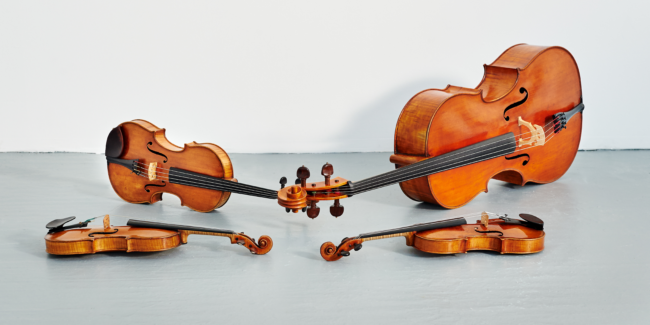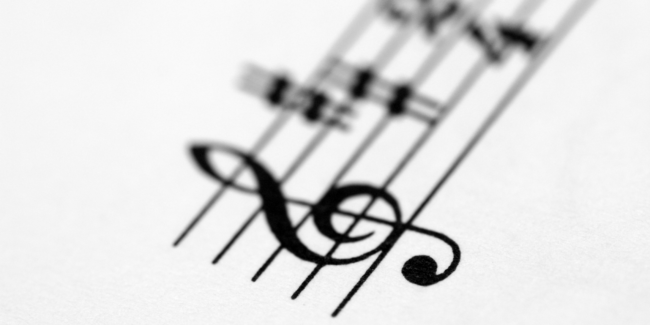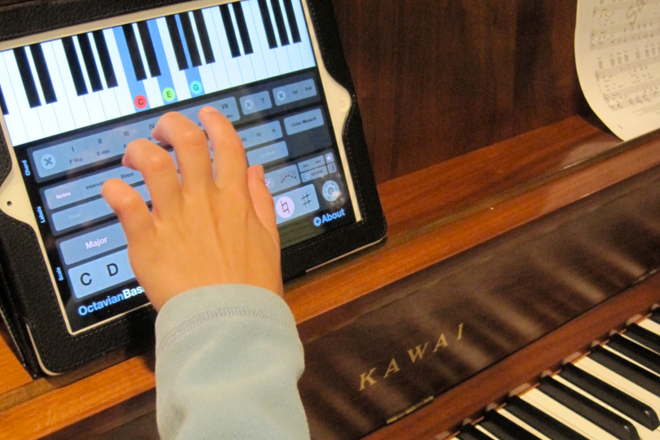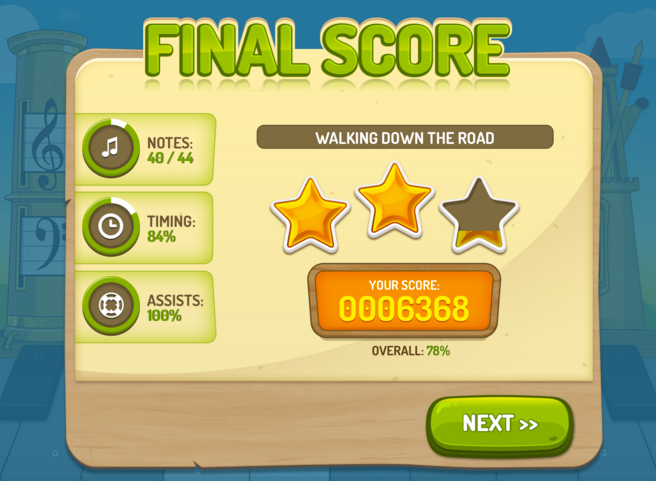How to Write Music for a String Quartet

Want to write music for a string quartet? You’re in good company! We’ve put a few tips together so you can follow in the footsteps of Beethoven, Mozart, and Haydn to write musical pieces that will stand the test of time.
Writing for a group of string instruments is a bit like juggling. You feel pretty confident about what you are doing when you have two balls in the air, but three or more can get a little dicey.
While duets may be simpler to write, writing for a quartet can be rewarding as you see it come together.
Here are a few tips to make writing music for your string quartet yield a beautiful result.
Which instruments make up a string quartet?
A string quartet means that four instruments with strings will play together. Traditionally, this group consists of two violins, a viola, and a cello. These instruments work nicely together because each instrument brings a unique personality to the group.

The famous composer, Rimsky-Korsakov, described the violin’s sound as brilliant, the viola as biting and nasal, and the cello as having a chest voice in his book Principles of Orchestration.
While we could probably couch those descriptions in more flattering terms, Rimsky Korsakov shows some of each player’s personality and voice.
You can, of course, choose four different stringed instruments and still call it a string quartet. But composers such as Haydn, Beethoven, and Mozart used this combination of instruments in their string combinations, so most follow their example.
Why mess with greatness?
Keep the range and key signature in mind.
If you plan to play the instruments via keyboard or digital piano, you don’t have to worry about the range and keys signatures.
However, if you plan to wow your audience with a live show and string musicians, these factors will be necessary.
After all, if you’re bringing four different instruments together, you want the instruments to complement each other and not clash.

Write for the range
The violin, viola, and cello each have unique ranges, so here’s what you need to know to make those notes shine.
While each instrument has overlapping sounds, each has an ideal range. If we consider that middle C is C3, then the violin has a voice range from G2-E6, a viola from C2-A5, and a cello from C1-G4.
Make sure you keep the musical line in a range that is easy for the musicians to reach and still sound good. The extremely high range of a stringed instrument can be difficult to play and grating to the ear. On the other hand, deep low notes sound pleasing. Don’t go out of the playable range.
Tips about key signatures
Most string players prefer to play in key signatures with sharps rather than those with flats. Often, composers write in an open string key.
For example, the key of A, D, and G will be an open string for the violin, viola, and cello. When these instruments play open-string, they make a full, rich sound–often easier on the musician!
Bach, Beethoven, and Mozart also wrote many famous pieces for stringed instruments in these key signatures. So, if you choose an open key signature to write your quartet, you are in good company.
Select a voice lead, or let each instrument have equal weight?
When you start writing, you need to decide if you will have a voice lead or if each instrument will have equal weight. Let’s look at these two approaches.
Voice lead
While all four instruments work together to create a musical masterpiece, one instrument traditionally takes the lead voice role–usually the first violin.
In this setup, the first violin carries most of the melody line. The second violin brings the countermelody. Then the viola and cello play a supporting role and add fullness to the sound. The first violin also takes on the group’s conductor role–starting the downbeat while the other musicians match and follow the lead voice’s tempo.
Polyphony
A modern convention is to skip a lead voice altogether and have each instrument carry the same weight. In this democratic approach, the string quartet often becomes polyphonic while four separate melody lines intertwine. Since there is no set leader, the musicians have to listen carefully to each other and make subtle changes as they go to match sound and tempo.
The pros and cons of each approach
Each approach has its pros and cons. Before deciding which way you want to write your piece, remember that the human ear habitually focuses on one melody. This means that the traditional approach sounds more orderly and is easier to write and play.
A democratic approach with several overlapping melody lines can sound exciting to the ear. In this approach, the musicians need to be very in-tune with each other to pull it off. Otherwise, the music can quickly head into chaos.
Four-part writing.
Writing music for four different instruments in four-part harmony can be a bit tricky. However, we have a few tips to offer so you can break down this big project into simple tasks.
Expand on basic chorale structure
You can look at a basic chorale structure to get an idea for your string quartet piece. You can break chorales into four voice parts: soprano, alto, tenor, and bass. This four-part harmony uses simple writing, so it’s easy for large groups to sing. Chorales often use the German bar form, an AAB melody pattern.
Chorales cater to voices, so they may differ in range and structure from strings. However, seeing how these simple four-part harmonies work together can be a good building block for writing music for string quartets.
Think linearly
While composing your piece in block chords can be easy, it is much better to approach each musical line linearly. When you dissect each musical line separately, it adds more depth and creativity to your piece.
As you write for each instrument, think:
- What are its strengths and weaknesses?
- What is its ideal voice range?
- Does this instrument carry the melody line or play a supporting role?
Things to avoid
Avoid having the violins play in unison when you write for each instrument. Instead of showcasing talent, unison parts can display any tuning differences (however minor), making even good musicians sound out of tune.
It is much better to have one violin take the main melody line and let the other violin play counter-melody to hide flaws better and give your piece a fuller sound.

The structure of famous string quartets
String quartets have been the most popular form of chamber music since the 1750s. They use four instruments, and the pieces are usually divided into four movements.
The structure of a string quartet generally follows this pattern:
- The first movement is in sonata form and played allegro in a tonic key.
- The second movement is much slower than the first and generally played in a related key.
- The third movement usually comprises a minuet and trio and is written in the tonic key
- The fourth movement is also in the tonic key in rondo form.
These movements allow your piece to take on form and tell a story with a beginning, middle and end through music.
Listen to the following pieces to see how famous composers created unforgettable stories through their string quartets:
- String Quartet Op 76 No 3, ‘Emperor’ by Haydn
- String Quartet No 19, K465, ‘Dissonance’ by Mozart
- String Quartet No 12, Op 96, ‘American’ by Dvořák
- String Quartet No 14, Op 131 by Beethoven
You’ll notice that each composer took the same assignment but created a different musical story. Feel free to allow your personality to shine as you make your piece.
Writing music for string quartets is not the most straightforward assignment, but it can be rewarding–especially when you hear your piece come together. Before you invite musicians to play your work, you can layer your music on a keyboard or computer to check for any awkward spots.
Not sure if you’re doing it right? We have a blog post for that. Check out these six things you shouldn’t do when writing music.









